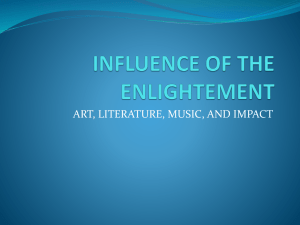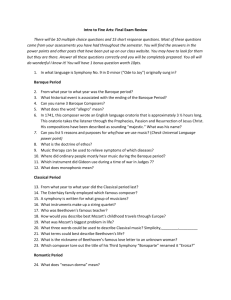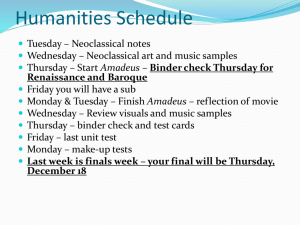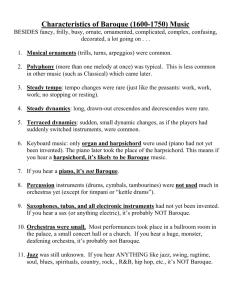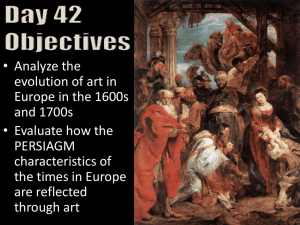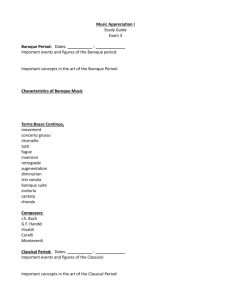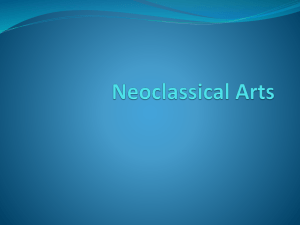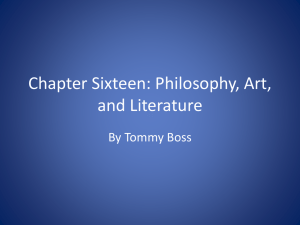Classical Period Powerpoint
advertisement
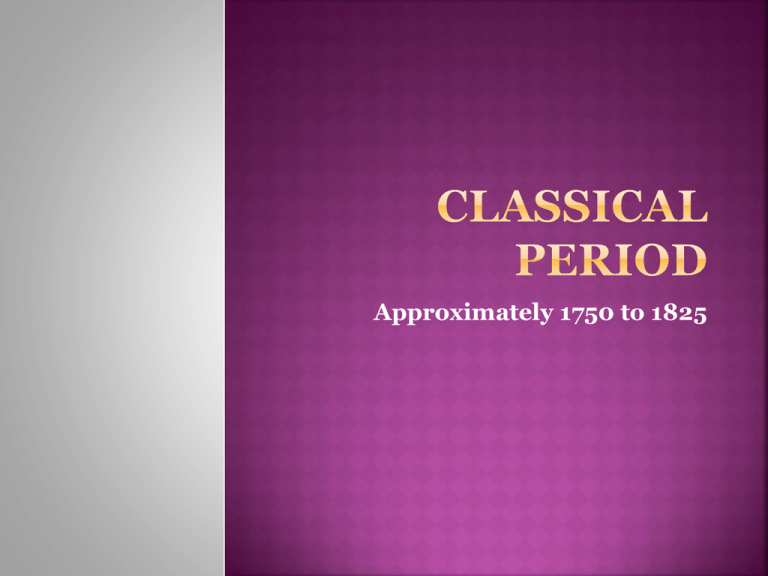
Approximately 1750 to 1825 Came from “Classicism” or Viennese Classic, since many of the great composers worked in Vienna. Classicism was originally about the arts. While the Baroque time period was linked to the courts and royalty, this NEW style was much cleaner. There were clearer divisions between parts, brighter contrasts and colors, and simplicity was preferred over complexity. Instead of counterpoint, music now moved towards homophony where a melody is put over a harmony (chords) greater focus on dynamics and phrasing. There were many characteristic rhythms, attention getting fanfares, funeral march rhythms, and more that characterized Classical music. Form (the shape of a piece) became more common. Concerto and Sonata form became clearly defined with specific rules that audience members could listen clearly for. Classical music is lighter, clearer, and less complex than Baroque music. Used shorter melodies that ended in a cadence (final chords). Instrumental music was the primary form of music – sonatas, trios, string quartets, symphony, serenades, and concertos. Franz Joseph Haydn Wolfgang Amadeus Mozart Ludwig Van Beethoven (early music) C.P.E Bach Born 1730 in Austria Known for his Symphonies and string quartets Friend of Mozart and teacher of Beethoven Started composing in the Baroque style Important works: “The Creation” oratorio Born 1756 in Germany Wanted to learn piano after older sister started lessons with father Child prodigy who travelled Europe playing to piano for kings and queens Imp. Works- Requiem (“Dies Irae” and “Lacrymosa”), “Eine Kleine Nachtmusic”, “Marriage of Figaro”
